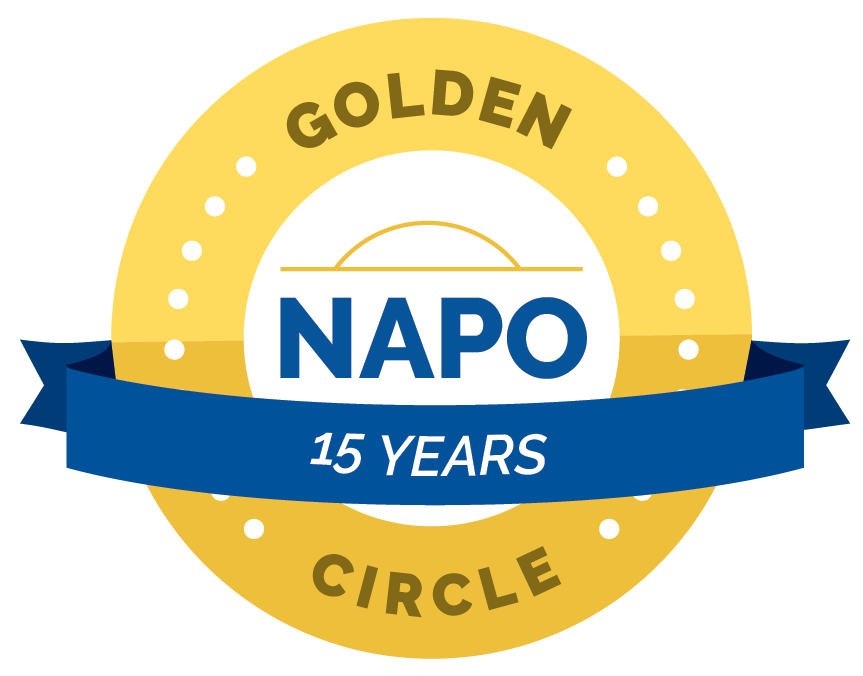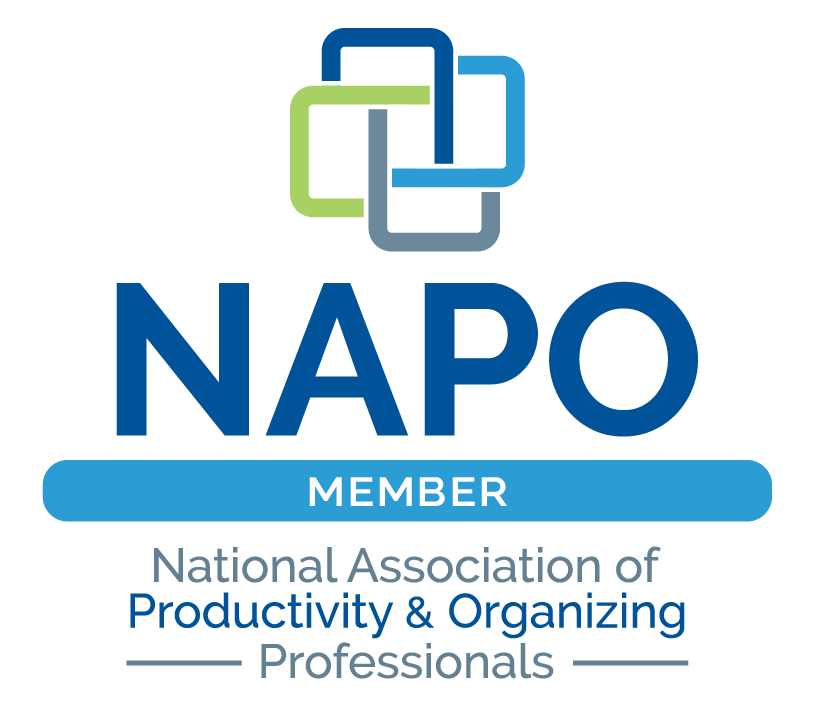Give With An Open Heart, Not A Cluttered Desktop
By popular request, Paper Doll is revisiting (with many updates) a favorite topic: dealing with charitable giving requests.

It’s not just ads and coupons, inveigling you to spend your precious little green bits of paper. This early, only a small percentage of your mail yields greetings from those early-bird friends who addressed holiday cards while they watched the Macy’s Thanksgiving Day Parade, the National Dog Show and the football games. The biggest contribution to all that Mail Call Clutter? Requests for charitable giving!
It’s easy to become overwhelmed. Certainly, you want to help further the causes about which you’re concerned (children, healthcare, the environment, animals, education, poverty…and the list goes on), but you may be troubled by multiple isues regarding the charitable giving process:
Limited Funds
No one individual (heck–not even Bill Gates, Warren Buffett and Oprah “You get a car and you get a car!” Winfrey, combined, for a total bankroll of $101.7 billion), possesses the funds to solve all of the world’s troubles. The folks on Forbes Magazine’s 2010 list of the 400 Richest Americans can’t even do it all. Thus, you may wonder if your contribution, even if it’s more than you can comfortably provide, has the power to make a difference.
Competing Interests
Weighing charitable giving options against one another can paralyze you into doing nothing, letting the piles of requests (and their associated letters and “gifts” of greeting cards and return address labels) creep across the kitchen table and overtake your office desk.
Just as you couldn’t take as much as you wanted from the Thanksgiving buffet because the elastic in your waistband might snap, your finances are finite and the number of charitable giving options, even just the non-profits actively seeking your help, are practically infinite. Responding to each request is no more suitable an answer than ignoring them all but still letting the papers clutter your surroundings and the guilt of non-responsiveness clutter your heart and mind.
Frustration & Confusion Over Repeated Requests
While non-profits certainly have more lofty goals than scamming you out of your money sooner than you planned, they nonetheless present you with an onslaught of requests. If you give to Charity A in December, not only will you receive repeated requests over the ensuing months for “Special Giving Opportunities” to Charity A, but in many cases, you will receive requests from similarly-themed Charities B, C, D to double-Z because many non-profits earn revenue by selling their “lists”.
It’s enough to turn anyone into a Scrooge. So, how can you resolve these frustrations?
Instead of choosing between the weight of guilt or the fear of exceeding your holiday (or monthly) budget, remember that there are better alternatives to feeling pressured into sitting down and writing a check to every cause that owns a bulk mail stamp–and none involve getting a sub-prime loan, robbing street-corner Santas or letting charitable clutter creep through your home. Instead:
1) Plan your charitable giving budget. Although a good number of people tithe or block a specific percentage of their earnings for charitable giving, many find themselves startled when facing multitudes of unexpected donation requests. The only way to give with your heart, without resentment, is to budget your donations as you would budget for all other expenditures.
Next, and this may shock those of you who have been conditioned by “This offer is available for a limited time only. Operators are standing by!” messages, but non-profits are always in need of money. In fact, some receive the bulk of their donations in the Fourth Quarter and then suffer from lack of funds by the middle of the next year. Just because you get dozens of requests for donations in December, your contributions will be no less valuable, life-saving or appreciated if sent three or six months down the line. Pace yourself.
Create and label a manila folder to collect all of the requests you receive for holiday donations, and during a quiet moment on New Year’s Day or soon after, sip some hot cocoa and review them. Make a note on your calendar and treat this as if it were a formal appointment with the director of each of the non-profit organizations.
Start by picking the charities that mean the most to you. Ask yourself, “If I could donate to only one charity, which non-profit would give me the greatest joy to help? Which would make me feel the most satisfied in my choice?”
There’s no wrong answer. While one person might donate to help political prisoners in an impoverished nation, another might choose to support an animal shelter two blocks away. One of you might choose to donate to medical research to find a cure for a disease that afflicts millions while another might give to one neighborhood family whose home burned down in a fire. It’s not all up to you — give with confidence that while you handle your share, millions of other similarly good-hearted people are doing the same.
Remember: you can’t give to everyone, but you can feel good about to whom you choose to give.
As you sort through the requests, determine:
1) How much can you comfortably afford to give each month? (Don’t forget any donations to which you’ve already obligated yourself via pledges, such as to your house of worship, your alma mater or public TV/radio stations.)
2) How often do you want to donate? To how many charities?
Do you want to give to 12 charities, and assign one to each month of the year (or maybe four, with one per quarter)? If so, tuck the envelopes away in your tickler file or bill-paying center. In this way, you can keep the spirit of giving alive throughout the year without being overwhelmed or over budget.
Or, would you prefer to give to one or two particular charities all year long? Set up a recurring donation on the same day of the month through your online bill-paying system. (You could schedule payments via credit card, but that costs the non-profit extra merchant account fees.)
2) Budget cash for ad hoc giving, such as when you encounter a Salvation Army bell-ringer or want to purchase a meal for a homeless person.
Set aside $5 or $10 in singles in a separate section of your wallet so you can make unplanned donations without breaking your budget. After all, it’s hard to give with an open heart if you’re feeling resentful about a pinch in your pocketbook.
3) Partner with others to achieve a charitable giving goal. For example, propose that you and your networking colleagues (or you and your Pilates class buddies), donate the monetary equivalent of one networking lunch or one post-class Jumpy Java to one specific charitable goal.
Or, if you wish to keep the spirit going all year, create a charitable giving club the same way you’d start an investment club. Instead of collecting articles about stocks and mutual funds, collect the brochures and request letters from non-profits and bring them to your group meetings. (You’ll be less inclined to let a charitable request languish atop your microwave if you know a group member feels passionately about that cause.)
4) Invest time in educating yourself about charities. Not all non-profits are created alike. Learn about the charities to which you are considering giving financial support. Find out what percentage of donations will be used for funding programs, research, etc., and what percentage goes towards advertising, paying staff, etc. Investigate potential recipient charities via: GuideStar.org‘s basic level provides free access to information that lets you verify a charity’s legitimacy, learn whether your prospective contribution will be tax deductible, view a non-profit’s IRS Form 990, or find out more about their programs, mission statement and financial activities. The database is huge, with well over one million non-profits included.
GuideStar.org‘s basic level provides free access to information that lets you verify a charity’s legitimacy, learn whether your prospective contribution will be tax deductible, view a non-profit’s IRS Form 990, or find out more about their programs, mission statement and financial activities. The database is huge, with well over one million non-profits included.
 The Better Business Bureau’s web site for charities offers Wise Giving Reports, explains charity accountability standards and provides background information on all the non-profits in the accredited charity directory.
The Better Business Bureau’s web site for charities offers Wise Giving Reports, explains charity accountability standards and provides background information on all the non-profits in the accredited charity directory.
![]() The American Institute of Philanthropy operates CharityWatch.org. Review their A-Z (well, A-Y, from the AARP Foundation to the Youth Development Fund) listings of hundreds of charities to learn more about their operations.
The American Institute of Philanthropy operates CharityWatch.org. Review their A-Z (well, A-Y, from the AARP Foundation to the Youth Development Fund) listings of hundreds of charities to learn more about their operations. CharityNavigator.org evaluates the financial health of thousands of America’s largest charities. Browse by charity name or category, and check out the blog, articles and charity ratings.
CharityNavigator.org evaluates the financial health of thousands of America’s largest charities. Browse by charity name or category, and check out the blog, articles and charity ratings.
5) Give donations that keep on giving.
Microlending organizations like Kiva (one of Oprah’s 2010 Favorite Things) allow people to lend small amounts of money, via the internet, to micro-financing institutions in developing countries. Your money partners with other donations to meet a recipient’s financial needs for starting a small business abroad.
You can narrow the list by business type, read the profiles and pick the recipients of your loan/donation. When that loan is repaid, your money goes back into a kitty to help others. You can even emulate Oprah and give a Kiva gift certificate.
Kiva promotes dignity, accountability and transparency, and loan recipients have a repayment rate of 98.99% on the $176,949,100 that has been borrowed thus far.
6) Give (actual) gifts of charity
Some people have everything, need nothing, and want only world peace and tranquility. But even the most high-minded of us like unwrapping something shiny. Revel in special opportunities to provide gifts that, while not tangible for the giftee, provide ineffable meaning for them and something essential and tangible to the third-party recipients (e.g., the hungry, the impoverished, the innocent, the needy). Organizations like Heifer International let you donate a flock of ducks or part of a water buffalo and invite heaping the gleeful honor of “ownership” on your recipient.
Be sure to make a notation on the request letter to show how much you sent, on what date, using what method (check, credit card, etc.). File the letter in the tax prep section of your family files until you receive an official confirmation of your donation from the non-profit.
In the meantime, feel good. You did a good deed for someone else, and you halted the charitable clutter creep.
7) Give Up The Guilt
Just because you receive address labels does not obligate you to make a donation to a charity, just as receiving a holiday card from a distant acquaintance does not obligate you add the individual to your card list. Don’t let them turn advertising techniques into a free ticket on the Guilt Trip Express. Use your brain — then give from the heart.
Finally, remember that you need not always give money. Donating your possessions, time and service to non-profits can be even more valuable than the amount of money you could afford to donate.
Keep the spirit of giving…just let go of the piles of requests.




Follow Me